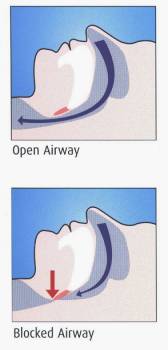Sleep Study
Obstructive Sleep Apnoea
Obstructive Sleep Apnoea (OSA) is by far, the most common type of sleep apnoea, and it is caused by obstruction of the upper airway. It is characterized by repetitive pauses in breathing during sleep, often associated with a reduction in blood oxygen saturation. This may occur several times an hour with each pause in breathing lasting typically 20 to 40 seconds.
With this drop in blood oxygen saturation, one is forced to awake in order to restart breathing. When one is unconsciously and repeatedly awaked, it results in poor sleep quality and daytime fatigue and sleepiness.
Without treatment, OSA increases the risks of developing heart attacks, hypertension, stokes, dementia and depression.
Test Yourself
If you suspect that you may be suffering from sleep apnoea, there are simple self administered tests you may take to assess your susceptibility.
Home Sleep Study
With the advances in technology, sleep testing may now be done in the comfort of your own home (unlike previously having to stay overnight in the hospital sleep lab).
A Portable Diagnostic sleep-screening device that offers enhanced flexibility and ease of use to be performed at the comfort of your home. Neither physical symptoms or clinic examination are sufficient for the diagnosis of Obstructive Sleep Apnoea (OSA). Polysomnography is required for the diagnosis. Home sleep study devices withstand the demands of both the clinical and home testing environment, while maintaining its impeccable record for the high quality and high performance that sleep professionals worldwide have come to rely on.

